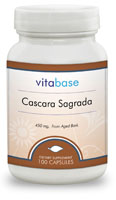| |
Cascara sagrada bark |
|
| Cascara sagrada is a a small deciduous tree that grows from 15-20 feet in height native to the provinces and states of the western coast of North America, including British Columbia, Washington, Oregon, and northern California. The leaves are rounded at the base and have somewhat hairy undersides. Cascara sagrada has pubescent stems covered with reddish-brown bark and often gray lichen. The tree bears dark green elliptic to oblong-ovate leaves with prominent veins and toothed margins. Cascara sagrada bark is a natural laxative useful for treating intestinal gas, liver and gall bladder complaints, and enlarged liver. |
| |
Medicinal uses and health benefits of cascara sagrada bark |
|
|
Cascara sagrada comtains anthraquinones (including emodin, chrysophanic acid, aloe-emodin, cascarosides A, B, C, and D). The anthraquinones stimulate the bowel, leading to evacuation after approximately six to ten hours. Cascarosides have a cathartic action that induces the large intestine to increase its muscular contraction (peristalsis), resulting in bowel movement. Cascara sagrada is a mild and safe laxative. Laxatives are products that promote bowel movements. Laxatives increase the action of the intestines or stimulate the addition of water to the stool to increase its bulk and ease its passage. Laxatives may act by increasing peristalsis by irritating the intestinal mucosa, lubricating the intestinal walls, softening the bowel contents by increasing the amount of water in the intestines, and increasing the bulk of the bowel content. The hydroxyanthracene aglycones inhibit water and electrolytes absorption from the colon and induce active secretion of water and electrolytes into the intestinal lumen. Pressure in the intestine is increased and peristalsis stimulated due to the increased volume of contents. The laxative effect of cascara sagrada is augmented by a pronounced bitter stimulating effect, particularly active in promoting liver function and bile secretion. |
| |
Side effects, precautions, interactions |
|
| Long-term use or abuse of cascara may result in weakened bowel function. It may also cause a potassium deficiency. Loss of potassium can cause dangerous heart beat irregularities. Excessive dosages may result in hypokalaemia. Fresh bark can cause nausea and vomiting. People with an intestinal obstruction, Crohn's disease, appendicitis or abdominal pain should not employ this herb. Pregnant women and nursing mothers should avoid cascara sagrada. Children younger than twelve with constipation should not be treated with cascara sagrada. |
|
|
|
|
 The Cascara Sagrada for this product is aged for one year to optimize the active constituents. The bark is peeled from the trees of the pacific Northwest. To work properly, the bark must be carefully prepared - cured for at least one year or heated and dried to speed up the aging process. Aging is essential because the fresh bark is very irritating to the gastrointestinal system, causing vomiting and intestinal spasms. Click here for more information.
The Cascara Sagrada for this product is aged for one year to optimize the active constituents. The bark is peeled from the trees of the pacific Northwest. To work properly, the bark must be carefully prepared - cured for at least one year or heated and dried to speed up the aging process. Aging is essential because the fresh bark is very irritating to the gastrointestinal system, causing vomiting and intestinal spasms. Click here for more information.